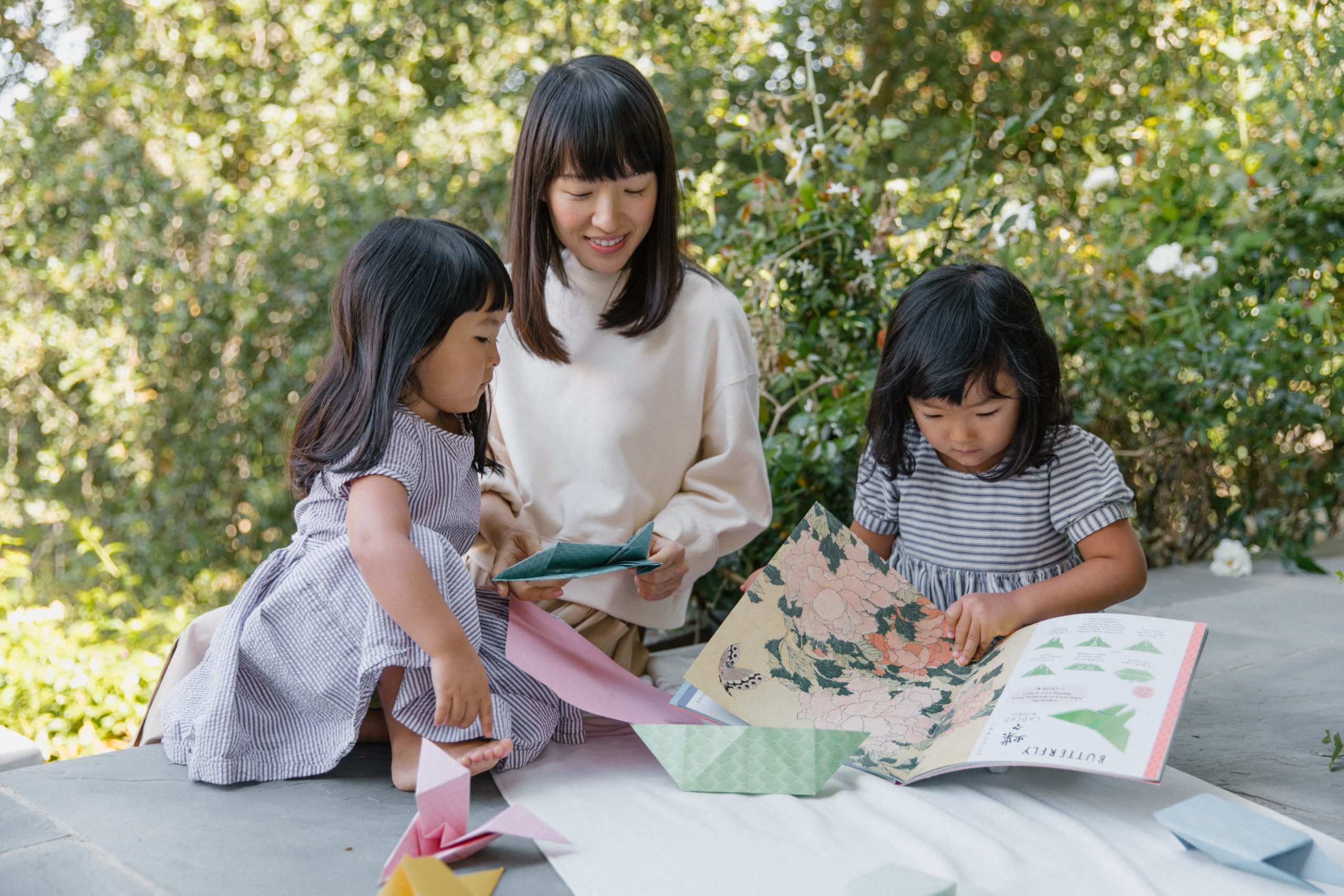A seemingly simple act, origami requires patience and discipline. It’s humbling to surrender to a six-inch piece of paper, but you can’t go on to the next fold until you’ve mastered the one you’re on. Fold by fold, those who practice origami achieve clarity and focus – much like those who give themselves over to tidying.
Marie’s own folding method is indebted to origami; in “Spark Joy,” she recommends approaching clothes as if you were creating an origami form. By applying firm, loving pressure one fold at a time, you give paper and fabric the boost they need to stand on their own and keep their folded shape.

The art of paper folding has been around for almost as long as paper, but origami’s undisputed grandmaster, Akira Yoshizawa, arrived on the scene in the 1950s. Before Yoshizawa, origami models were made in hard, angular shapes. He discovered that dampening the paper – a.k.a “wet-folding” – could create rounded curves, making way for animals and flowers. Published in 1954, Yoshizawa’s first book established the Yoshizawa–Randlett system – the recognized standard in use by paperfolders today – and made him a celebrity.
Much like bonsai, origami cannot be rushed. Artists play a long game. Yoshizawa could spend up to three years on a single form; in fact, he spent 23 years developing one origami model.
“When you fold, the ritual and the act of creation is more important than the final result. When your hands are busy your heart is serene.”
That said, patience and persistence are rewarded: An ancient Japanese fable promises that if you fold a thousand paper cranes – known as a senbazuru – you’ll be granted a special wish. A symbol of luck and prosperity in Japanese mythology, cranes were popularized by the legacy of Sadako Sasaki and the children’s book based on her life, “Sadako and the Thousand Paper Cranes.” A young girl, Sadako survived the bombing of Hiroshima but fell ill with leukemia from radiation. While in the hospital, Sadako set out to fold a thousand paper cranes with the hope of using her wish to get well. She folded 644 cranes before she passed away. Her friends and family finished folding her senbazuru, and both she and the paper crane became a symbol of peace around the world.
The legend of the thousand paper cranes is a fitting allegory for the art of origami. It is a practice that gently asks you to suspend impatience and desire for immediate gratification – a true antidote to our modern day lifestyle.








